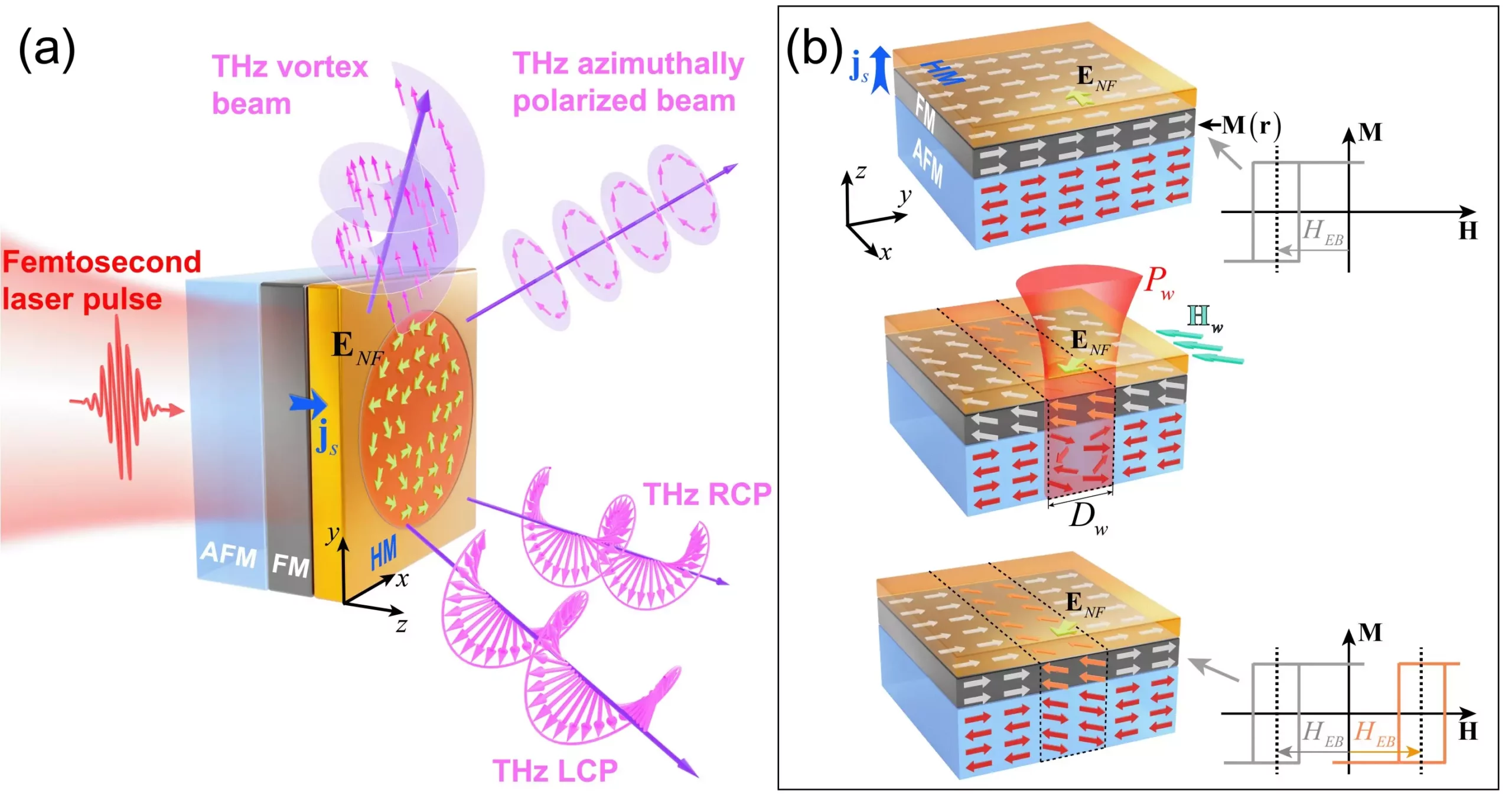In a groundbreaking announcement, researchers have unveiled an innovative approach to producing structured terahertz light beams made possible through the use of programmable spintronic emitters. This significant advancement marks a paradigm shift in how we generate and manipulate terahertz frequencies—an area of research that has faced considerable obstacles due to the intricacies involved in easily producing and controlling terahertz radiation. This novel method opens up a world of possibilities, potentially transforming applications ranging from security scanners to cutting-edge medical imaging and next-level ultrafast communication technologies.
The Terahertz Spectrum: Bridging Gaps in Technology
Terahertz radiation occupies a unique position between microwaves and infrared light on the electromagnetic spectrum. As a relatively unexplored domain, it offers immense potential for various innovative applications. However, the complexities of generating and manipulating this form of light have previously constrained its use in practical technologies. The work conducted by a team led by Prof. Zhensheng Tao, Prof. Yizheng Wu, and Prof. Yan Zhang, as published in eLight, represents a significant breakthrough. They have successfully tackled these longstanding challenges through the introduction of programmable spintronic emitters that make use of exchange-biased magnetic multilayers.
Innovative Emitter Design: Precision at Its Core
At the heart of this advancement lies the design of spintronic emitters comprising layers of both magnetic and non-magnetic materials. This configuration enables the conversion of laser-induced spin-polarized currents into a spectrum of broadband terahertz radiation. Graduate student and lead author Shunjia Wang highlighted a key innovation—programming the magnetization pattern within these emitters with high precision and spatial resolution. This capability allows for the tailored generation of terahertz beams with intricate polarization states. Imagine creating beams that feature spatially distinct circular polarizations or displaying azimuthal and radial polarization states—all of which have formidable implications for both scientific exploration and practical deployment.
The Poincaré Beam: A Game Changer in Polarization States
Perhaps one of the most exciting aspects of this research is the demonstration of the Poincaré beam. This type of beam showcases all conceivable states of light polarization within its cross-section. Such versatility is revolutionary, as it can lead to specialized optical forces, optimized intensity profiles, and even facilitate polarimetry measurements in a single shot. The researchers’ ability to successfully generate these intricate structured terahertz beams signifies a giant leap forward, heralding a new era of advanced terahertz technology that can cater to the burgeoning demands of modern applications.
Future Implications: Paving the Way for Advanced Applications
The implications of this research extend well beyond mere academic curiosity. Prof. Zhensheng Tao posits that their discoveries herald the advent of novel terahertz devices equipped with enhanced functionalities that could propel the field to new heights. As industries increasingly rely on advanced imaging and communication technologies, the ability to harness and manipulate terahertz light effectively will be crucial. This research not only encourages further exploration into the capabilities of terahertz systems but also presents opportunities for a revolution in how we perceive and utilize light in general. The future looks bright, as this pivotal shift in terahertz technology demonstrates the endless potential of innovation within the realm of photonics.

